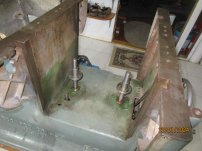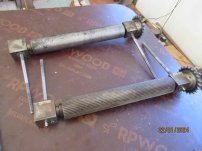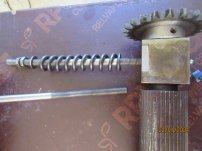How do you adjust spring tensión of feed and pressure rollers in a thicknesser? I cannot measure that tension, but need a ballpark way to set it.
I'm rebuilding an old 40cm (16in.) italian machine.
There are two idle rollers in the table underneath the feed and pressure rollers.
I found "Getting peak planer performance" in FWW, very useful but it mentions nothing about spring force, it shows what feed and pressure roller height should be with respect to the table but that is non-adjustable in my machine or in any other thicknesser I've seen.
I'm rebuilding an old 40cm (16in.) italian machine.
There are two idle rollers in the table underneath the feed and pressure rollers.
I found "Getting peak planer performance" in FWW, very useful but it mentions nothing about spring force, it shows what feed and pressure roller height should be with respect to the table but that is non-adjustable in my machine or in any other thicknesser I've seen.






